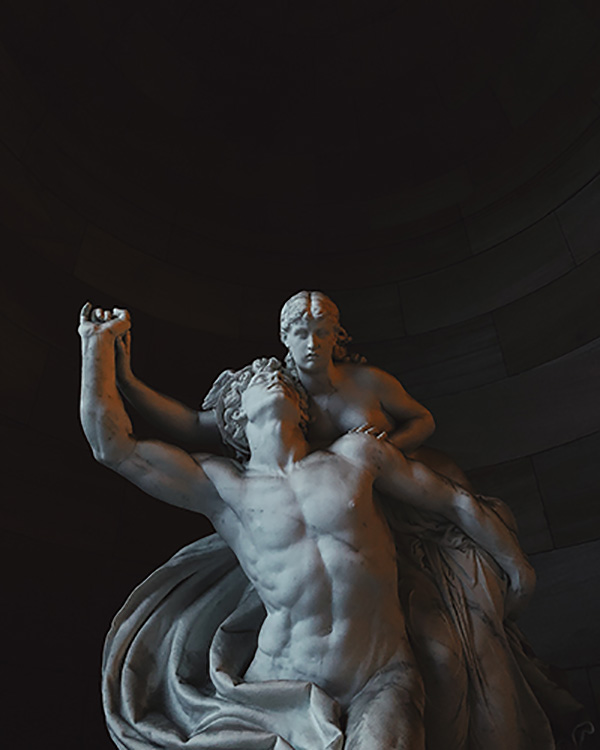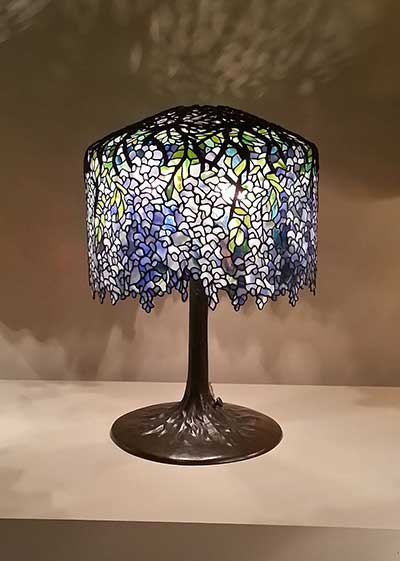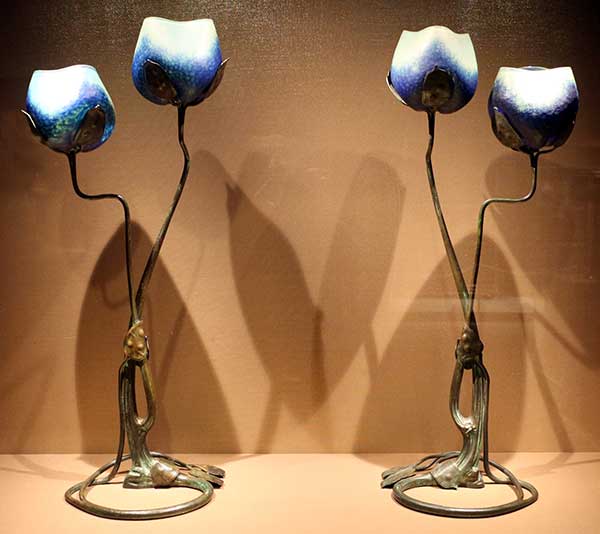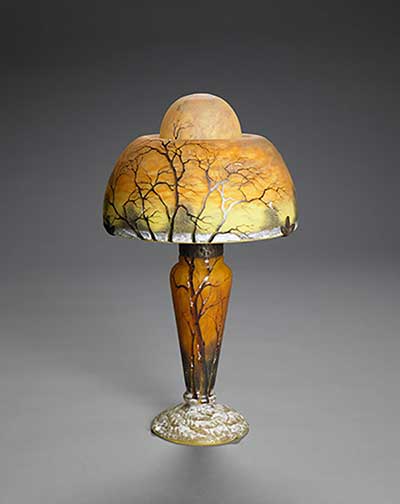
The Tiffany Girls
Have you heard the story of the Tiffany girls? Tiffany & Co., an American luxury Company, founded in the early 19th century, produced glass products in Art Nouveau style. The company continues its work today with its headquarter in New York City and other locations in the United States, Mexico, Canada, and other European countries.
In 1894, the company developed Favrile glass that later became a brand, and used ingrained colour in the glass itself to produce stained-glass windows. In truth, Tiffany chose to paint with the glass rather than on the glass. Treating molten glass with metallic oxides and alloys led to unique hues, iridescent colours and free-flowing shapes in design.
During four years of the first decade of the 19th century, Tiffany & Co. manufactured 200 electric lamps, 300 fuel lamps and 200 hanging lampshades. The firm produced narrow bases and light stems relying on the potential electrical lighting techniques.
If we are curious about Tiffany’ lighting fixtures, we can’t ignore the role of female designers in creating enduring glassmaking in their production. The women confronted many barriers to work in the early 19th century as experienced freelance designers who offered their profession in exchange for minor privileges. Clara Driscoll, a glass designer, became the supervisor of the female designing department of Tiffany’s corporation. The organisation maintained women’s right to design exquisite goods and encouraged them to promote and defend their legitimate business interests in applied art. The Tiffany’s girls were the notable designers of the World’s Fair 1900. Using leaded glass enabled them to offer allured pictorial compositions. The dome lampshades with irregular circular shapes formed an unconventional assemblage of brilliant artwork that brought those designers universal fame and recognition.
In 1902, two lamps had won the grand prize in the Italian Turin exposition. The jury awarded the best product designs, and they increasingly attracted the participants’ attention. The first and the most popular lamp was the bronze based Pond Lily lamp which included ten lights of faced down blown glass, and the other one was the leaded glass Wisteria lamp with 2000 pieces of glass which was a labour-intensive product.
Get more information on this overview page.
Text: Lalerou
© Copyright. All Rights Reserved
- Category: Vintage Lamp Shades, the styles, types, and shapes
View also our related posts:
Visit also our today's Featured Museum: The Louvre Museum
The Louvre
The Louvre in France and around the world
Further Views
All the news
LIFE AT THE MUSEUM
Further Views
Available Galleries
Schedules
Further Views
Exhibitions
The Louvre Showcases
Further Views
Playlist
Vintage





